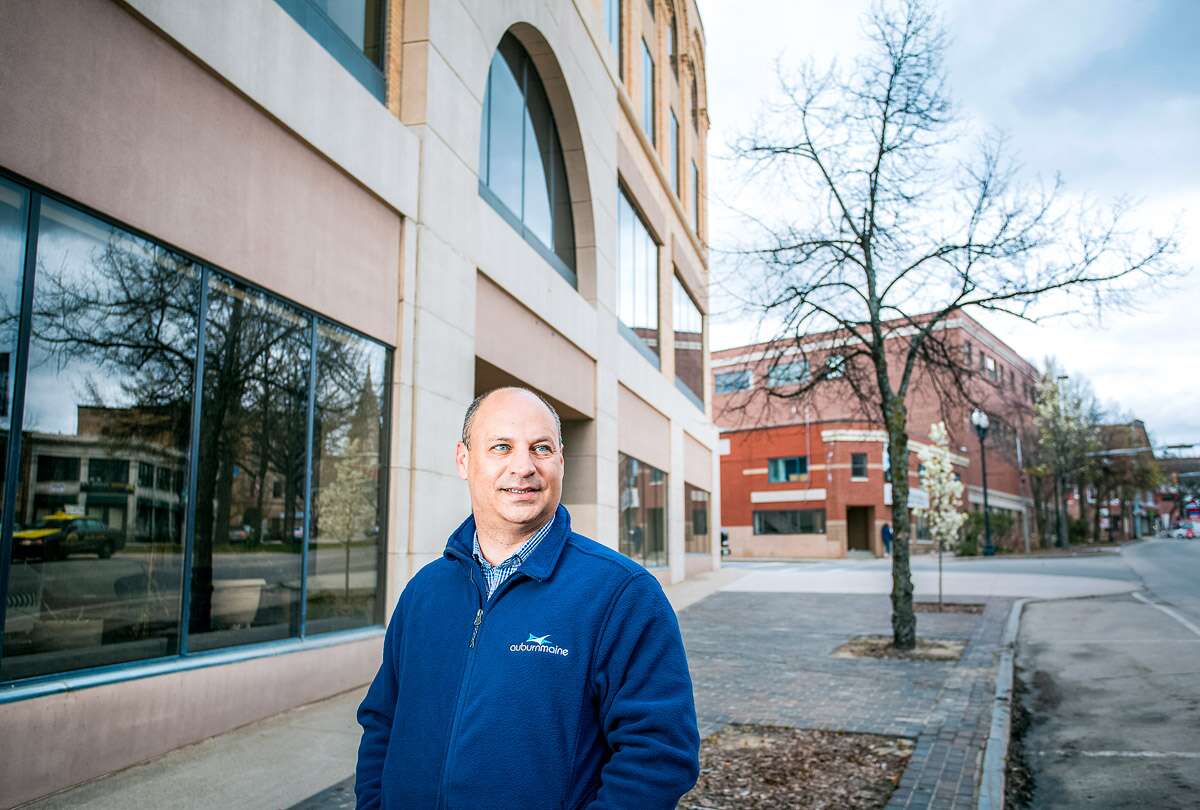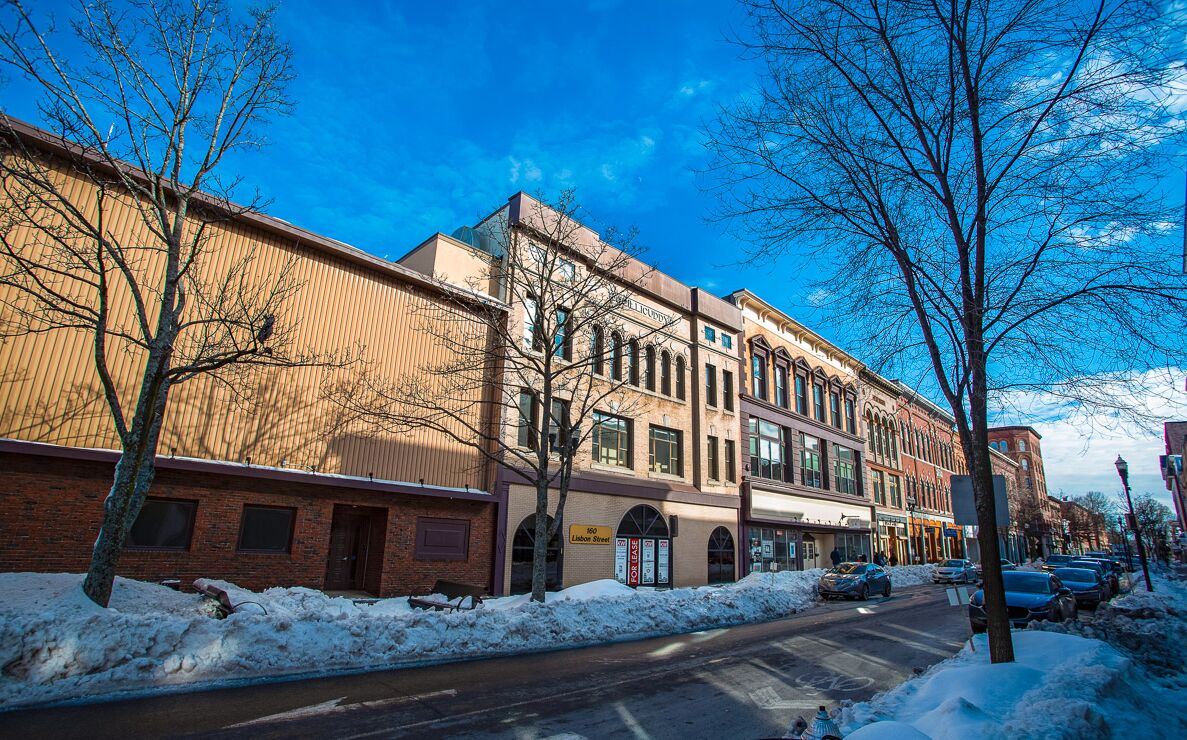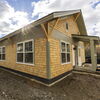
Lewiston and Auburn say ‘yes’ to development
 Photo / Tim Greenway
The Lewiston City Council is saying, ‘Yes, come to Lewiston. We’re open for business,’”
Photo / Tim Greenway
The Lewiston City Council is saying, ‘Yes, come to Lewiston. We’re open for business,’”
Sister cities Lewiston and Auburn, a stone’s throw from each other across the Androscoggin River, both have a “yes, in my backyard” perspective on development. Lewiston is nearing completion of an extensive zoning update to facilitate more commercial and residential development. Auburn is courting developers to build 2,000 new housing units by 2025.
Lewiston
Lewiston’s slogan — “Opportunity lives here!” — signals its certification as a business-friendly city by the state. In 2022 Lewiston City Council set a goal of increasing housing of all types in the city. An important strategy to achieving this goal was city zoning codes.
Zoning updates are designed to remove obstacles to economic development and encourage more housing.
“Before adopting these zoning improvements, many requirements not only hindered development but also, some may argue, actively worked against it,” says City Councilor Rick LaChapelle, Ward 4.
The amended ordinances are designed to be more efficient, user-friendly and clear.
“We’re in the age of streamlining,” says LaChapelle. “Why not streamline the process of getting permits, make it user-friendly, say ‘Yes, we can’ instead of ‘No, we can’t?’”
Says Misty Parker, assistant director of Lewiston’s economic development department, “Developers want to see predictability in our process.”
The process was impelled by the city’s continued growth and the realization that it needs to develop deeper relationships within the community to meet its needs.
“There’s no scorecard saying we were failing in any areas,” LaChapelle says. “It’s just a question of, in this day and age, how do we make things easier?”
The ordinances had largely gone untouched for decades. The changes were accomplished within a year.
“When we started talking about this project it was massive,” he says. “And it didn’t just involve one department. Planning, code enforcement, economic development, the police department, the fire department — every department had input.”
The process’s “lightning speed” was a matter of will.
“The city council spoke clearly about what they wanted,” LaChapelle says. “The city administration grabbed the reins and went full-steam: ‘It needs to be done; it needs to be done quickly.’ It was a great teamwork effort. And we know it will have profound impacts not just in 10 years, but next year.”
Topics addressed included parking, accessory dwelling units, housing density, three main commercial arterials and business and housing opportunities.
Among the specifics, modified zoning of nearly 375 properties within Sabattus, Lisbon and Main Street corridors, including increased depth of commercial zoning districts, reduced setbacks providing more space for development and more opportunities for multi-family development.
Multi-family development is now allowed in the three corridors, in order to increase housing supply, make more efficient use of the land, enhance neighborhood and urban vitality, and improve access to amenities.
Within the greater downtown area, where properties are closer to public transportation, sidewalks and municipal parking facilities, parking standards were reduced to provide more opportunity for lot development. For example, new businesses will likely not have to provide parking on site in much of the downtown.
In some neighborhoods, the city now permits small stores and food establishments in order to increase neighborhood vibrancy and quality of life. Updates provide for creative recreation solutions in the downtown, such as indoor recreation spaces, balconies and rooftop decks. Restrictions on backlot and accessory structure development and expansions were eased.
Updates even allow more Lewiston homeowners to have the opportunity to keep bees and chickens. Recognizing changes in today’s work environment, new rules expand home occupation opportunities. New accessory dwelling units language aims to ease the housing crunch, provide opportunity for additional income and expand flexibility to homeowners.
The updates had the city’s planning staff scouring through thousands of detailed changes and dozens of substantive changes.
Many of the old zoning provisions were adopted in the late 1980s.
Zoning and land use practices have since evolved, says LaChapelle, who spearheaded the overhaul.
“From the council point of view, we’re saying, ‘Yes, come to Lewiston. We’re open for business,’” he says. “We have homes selling for $1 million and we have homes selling for $30,000. We have a broad spectrum of business, from 70,000 square feet to a thousand square feet. We’re really diversifying, we need the small businesses, and we need the big businesses. Lewiston is ready to help.”
Auburn

In Auburn, Mayor Jason Levesque has aggressively courted development, challenging developers to build 2,000 new housing units by 2025. He has said his goal for the city of 24,000 is to boost its population by 25%.
Auburn is seeing new highs in construction permits. Commercial and residential development is booming, with the arrival of chain stores, expansion of local factories, and national headlines as America’s “YIMBYest,” saying “Yes in My Backyard” to new development.
The city has offered several properties for sale by bid, with the goal of attracting new development, increasing housing stock and stabilizing rental and real estate prices.
Commercial and residential development is sizzling in Auburn, which is setting records for permitted construction value and investment. In 2022, there was well over $74 million in estimated cost of construction. Similarly, the planning and permitting team set a workload record for permitting and inspection.
On top of the $74 million was the single largest permit of the year – a new $110 million high school. Including the high school project brought fiscal year 2022 permit value to $184.5 million.
The growth was deliberately planned. The city’s 2019 strategic plan and updated comprehensive plan placed high priority and clear focus on issues like housing, workforce development, walkability, recreation and quality of life.
From 2018 through February 2023, 447 multifamily units were permitted and constructed (some are still under construction), along with 131 single-family, duplex and accessory dwelling unit new construction projects.
In the past few months, 13 more single and duplex permits were issued; 24 more multi-family units were permitted in July.
The city expects to see planning board or permit applications for 60 to 96 more units by late summer.
Many more rental units are in discussion, with a few hundred far along and about 2,000 in early discussion that are promising. Those are a mix of multi, single and condo projects providing rental and home ownership opportunities.
Lending itself to the YIMBY approach is Auburn’s sheer size, says Levesque.
“Geographically, Auburn is huge — the size of Portland, South Portland, Cape Elizabeth and Westbrook combined,” he says. “We recognized that our cost to provide city services was pretty high proportionally and that we needed more residents in order to normalize our tax rate. That was really important.”
Secondly, while it’s great to wish for more people and the city has space for more, it also has another key element.
“Location, location, location,” says Levesque. “We’re an hour from three-quarters of Maine’s population. We’re close to the mountains and to the ocean. We’re the only city that has its own ski resort — Lost Valley. We have the infrastructure. We have all the ingredients needed.”
Auburn also has great neighborhoods. But they were built prior to exclusionary zoning, which was meant to stop growth and resulted in one of the oldest housing stocks in New England.
“We wanted to open it up by revamping all our ordinances and loosening them up,” he says.
A primary initiative was the deletion of the vast majority of the exclusionary aspects of zoning, in order to allow Auburn to rebuild and expand.
“Once we did that, we started seeing amazing growth,” he says. “We started seeing people discover Auburn for first time. We’ve had a massive amount of people coming to Auburn, buying homes, building homes, building ADUs, rehabbing.”
The city is backing up its rezoning efforts with financial initiatives funded by the city’s $13 million share of American Rescue Plan Act funds, which the city is using on grants to help finance new businesses and improve homes.
“We’re looking at all impediments to growth and getting rid of them,” he says.
For example, the city charges only $25 for building permits and waived permit fees for veterans.
The zoning updates resulted in a flat mil rate this year because it’s brought more commercial development — bringing new business and expansions, says Levesque.
“We recognized that all this new growth in residential would helps our commercial growth,” he says. “And it has.”
More downtown development will be announced shortly, he hints.
“We’re taking a practical approach,” he says. “It’s all of the above. I think a lot of government folks focus on a silver bullet: ‘If we just get an Amazon warehouse, everything will be great.’ That’s never the case. You have to take an incremental approach.”














0 Comments